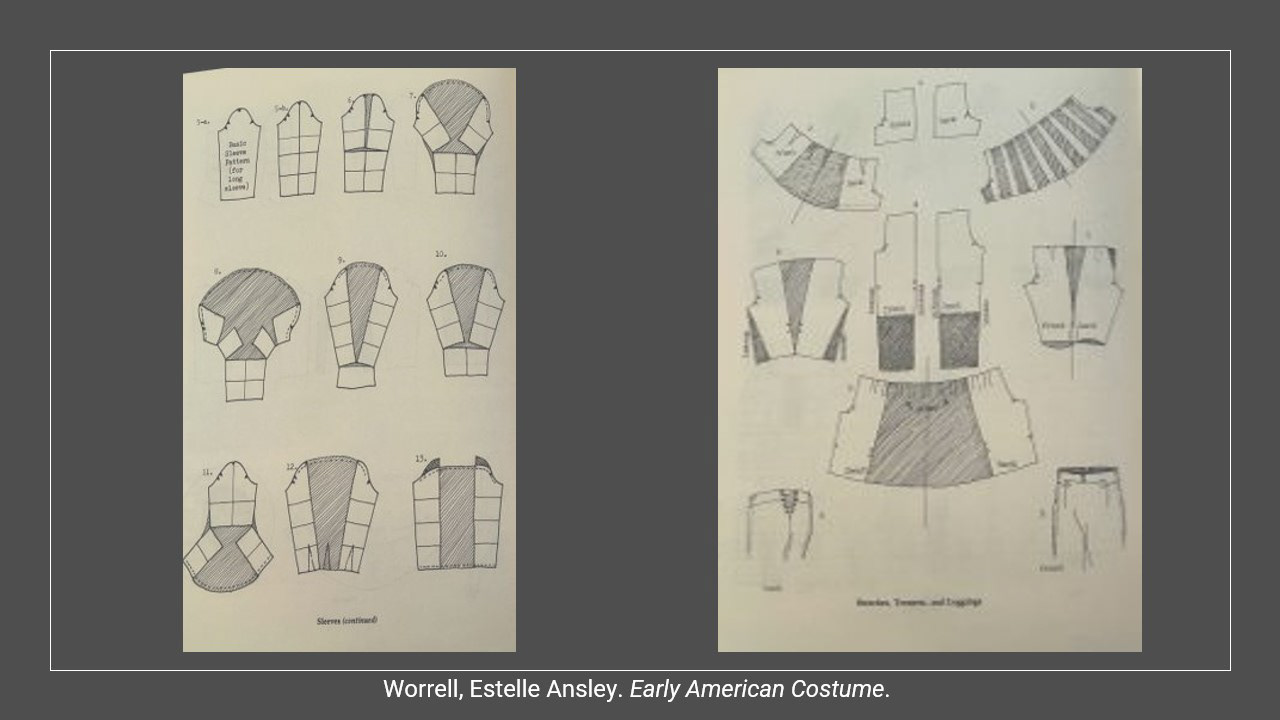Before the mid 1800's Families depended on the women with their skill with the needle. All women were expected to know how to sew. Their tools consisted of an iron, pair of scissors, and needle. The skills that come with mending clothing or any kind of fabric signified more than the ability to trim a garment, it was a mark of upbringing. Girls were taught to do over-stitch, hemming, running, felling, back-stick and run, buttonhole-stick, chain-stick, whipping, darning, gathering, and cross-stitch. By 1846,Elias Howe credited with the first successful sewing machine. Interesting enough the public was slow in accepting but newspapers started advertising and marketing by calling it a "time saver." Fun Fact: 1870 the First sewing machine was identified as a "common sense" machine.
source: Mills, Betty J. Calico Chronicle : Texas Women and Their Fashions, 1830-1910. Texas Tech Press, 1985.

Magazine advertising woman's fashion and the prices they were sold in mid 1800's. Source: Mills, Betty J.
Evolution on fabric Tool use

Institute of Texan Culture
Institute of Texas Cultures
Singer Sewing Machine Company. 1915 I-0087a aT itc.
Charcoal Iron
Hungary. Accession Number: 2013.16.1 at ITC.
Click to watch a video of a woman using a 1800's weaving machine.
Calico Chronicle: Texas Women and Their Fashions, 1830-1910 by Betty J Mills
INTERESTING TERMS USED IN FASHION: ANY UNHEARD TERMS OR TERMS WE STILL USE TODAY?
Broche- fabric, usually of silk, woven with raised figure, combining plain ,and pile weaves.
Crepe lisse- thin, smooth, glossy silk fabric with feel of crepe; French word meaning smooth, glossy.
Epaulettes- Shoulder ornament to give effect of width to shoulder line.
GAUGE- TO DRAW IN EQUIDISTANT GATHER BY RUNNIBNG A THREAD THROUGH IT; USED WHEN LARGE AMOUNT OF MATERIAL HAS TO BE DRAWN INTO SMALL SPACE.
VAL OR VALENCIENNES LACE- FLAT BOBBIN LACE WORKED IN ONE PIECE WITH THE SAME THREAD FORMING BOTH THE GROUND AND THE DESIGN;ALSO NARROW MACHINE-MADE LACE USED FOR LINGERIE AND WASH DRESSES.
ZEPHYR- THIN, FIND CASHMERE OR LIGHTWEIGHT WORSTED WOOL; NAME IS FROM ZEPHYRS, CLASSICAL GOD OF THE WIND.
NUN'S VEILING- THIN, SOFT, LOOSELY WOVEN WOOLEN OR SILK AND WOOLEN FABRIC THAT HAS A PLAIN WEAVE.
CALICO- ONE OF THE EARLIEST COTTON FABRICS KNOWN; PERFECT EXAMPLE OF FINE, PLAIN, WEAVE; YARN-DYED, PIECE-DYED, OR PRINTED WITH PATTERNS.
Mills, Betty J. Calico Chronicle : Texas Women and Their Fashions, 1830-1910. Texas Tech Press, 1985.
CONSTRUCTING THE COSTUMES:
WOMEN (RIGHT)- HATS, BONNETS, COLLARS, KERCHIEFS, AND SHAWLS
MEN ( LEFT)- BREECHES, TROUSERS, SLEEVES, AND LEGGINGS.

